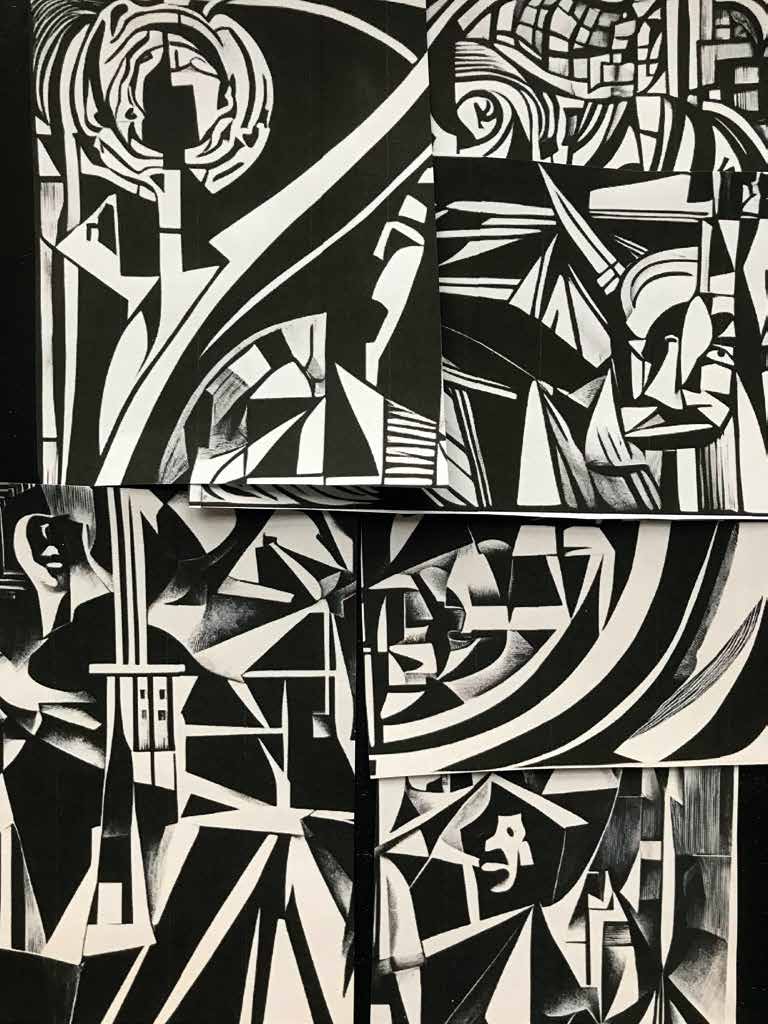Walter Benjamin jedzie na Capri i zakochuje się
Walter Benjamin reist nach Capri und verliebt sich
Walter Benjamin Goes to Capri and Falls in Love
(The Author as a Consumer)
Artysta | Künstler | artist: Michael Schultze (1965)
miejsce | Ort | place: Brandenburgisches Landesmuseum für moderne Kunst (Packhof), Carl-Philipp-Emanuel-Bach-Straße 11, Frankturt (Oder)
W 1924 roku filozof Walter Benjamin udał się w podróż na śródziemnomorską wyspę Capri. Spotkał tam Bertholda Brechta i łotewską reżyserkę teatralną Asję Lacis, zagorzałą komunistkę, która zawróciła mu w głowie. Siłą swego libido wywarła realny wpływ na teorie zawarte w pracy Benjamina. Spotkanie z Lacis i Brechtem oznaczało dla niego początek owocnej kosnfrontacji marksizmu z własnymi specyficznymi przekonaniami teologicznymi. Wraz z pojawieniem się drzeworytu w Europie w XIV w. rozpoczęła się rewolucja medialna, która trwa do dziś: obraz świata stał się reprodukowalny. Obrazy te dla rzeszy osób niepiśmiennych były pełne magii i niezwykle realne. Może nawet można je porównać z tymi, którymi media społecznościowe zalewają dzisiejszy świat. Przodkami drzeworytu z epoki kamiennej są dłonie, które zanurzano w farbie i odbijano na ścianach jaskiń Lascaux – jako świadectwo i ślad. Drzeworyt jest więc zarówno śladem, jak i przesłaniem dającym światu jego wyimaginowane, powielone odbicie. Metafizyczna operacja, której konsekwencji jeszcze w pełni nie zrozumieliśmy…
1924 unternimmt der Philosoph Walter Benjamin eine folgenreiche Reise auf die Mittelmeerinsel Capri. Dort begegnet er Berthold Brecht und der lettischen Theaterregisseurin Asja Lacis und verliert sein Herz an die glühende Kommunistin Lacis. Diese gräbt mit libidinöser Wucht einen materialistischen Stollen in Benjamins theoretisches Werk: Die Begegnung mit Lacis und Brecht markiert für Benjamin den Beginn einer fruchtbaren Auseinandersetzung mit dem Marxismus und seinen eigentümlichen theologischen Versprechungen. Mit dem Aufkommen des Holzschnitts in Europa im 14. Jahrhundert begann eine Medienrevolution, die bis heute nicht abgeschlossen ist: Das Bild der Welt wurde reproduzierbar. Diese Bilder für die illiteraten Massen waren voller Magie und unerbittlich real. Vielleicht vergleichbar mit den Bildern, die die sozialen Medien heute in die Welt pumpen. Die Urahnen des Holzschnitts sind die steinzeitlichen Hände, die in den Höhlen von Lascaux in Farbe getaucht und abgeklatscht wurden – ein Zeugnis, eine Spur. So ist der Holzschnitt Spur und Botschaft zugleich und schenkt der Welt ihr imaginäres, vervielfältigtes Double. Eine metaphysische Operation, deren Konsequenzen wir bis heute nicht zur Gänze verstanden haben…
In 1924, the philosopher Walter Benjamin went on a trip to the Mediterranean island of Capri. There he met Berthold Brecht and the Latvian theatre director Asja Lacis, a staunch communist who turned his head. By the force of her libido, she exerted a real influence on the theories in Benjamin’s writings. For the philosopher, the meeting with Lacis and Brecht marked the beginning of a fruitful confrontation of Marxism and his own theological beliefs. With the advent of woodcuts in Europe in the 14th century, a media revolution began that has continued to this day: the image of the world became reproducible. For multitude of illiterate people, these images were full of magic and extremely real. Perhaps they can even be compared to the ones with which social media floods the world today. The ancestors of Stone Age woodcuts are hands dipped in paint and printed on the walls of the Lascaux caves—as a testimony and trace. The woodcut is thus both a trace and a message giving the world its imaginary, reproduced reflection. A metaphysical operation whose consequences we have not yet fully understood.. .
